

Alphabet books offer a vivid insight into the history of literacy and culture, as well as concepts of childhood. The Children's Book Collection at UCLA contains a rich array of these materials, some well-worn and much-used, some still bright and fresh. Each is a gem of print production and graphical imagery from another time and place. Though the history of alphabet books continues to the present, this exhibit focuses on the works in our collections published between 1700 and 1900, including horn books, primers, works of didacticism and seriousness, whimsy and play.
2. A Jumble ABC
3. A Little Pretty Pocket-Book
4. A New Lottery Book of Birds And Beasts
5. A Pretty Play-Thing for Children of All Denominations
8. ABC of Objects for Home And School
10. ABC with Pictures & Verses
12. Alphabet Et Instruction Pour Les Enfans
16. Dolly's ABC Book
17. Flora's ABC
18. Home ABC
22. Hornbook C. 1700
23. Large Letters for the Little Ones
24. Little ABC Book
25. Little People: An Alphabet
26. Martin's Nursery Battledoor
27. Mother Goose ABC
28. My Darling's ABC
29. Orbis Sensualium Pictus Quadrilinguis
30. People of All Nations: A Useful Toy for Girl Or Boy
31. Picture Alphabet
32. Pretty ABC
33. Railway ABC
34. Rusher's Reading Made Most Easy
38. The Alphabet of Old Friends
40. The Amusing Alphabet for Young Children Beginning To Read
42. The Child's Christian Education
45. The Easter Gift
47. The Favorite Alphabet for the Nursery
49. The Franklin Alphabet And Primer
51. The Golden ABC
55. The Moral And Entertaining Alphabet
57. The Old Testament Alphabet
59. The Picture Alphabet for Little Children
62. The Sunday ABC
63. The Union ABC
64. The Young Child's ABC, Or, First Book
65. Tom Thumb's Alphabet: Picture Baby-Books
67. Warne's Alphabet And Word Book: with Coloured Pictures
68. Wood's Royal Nursery Alphabet
Title A Pretty Play-Thing for Children of All Denominations
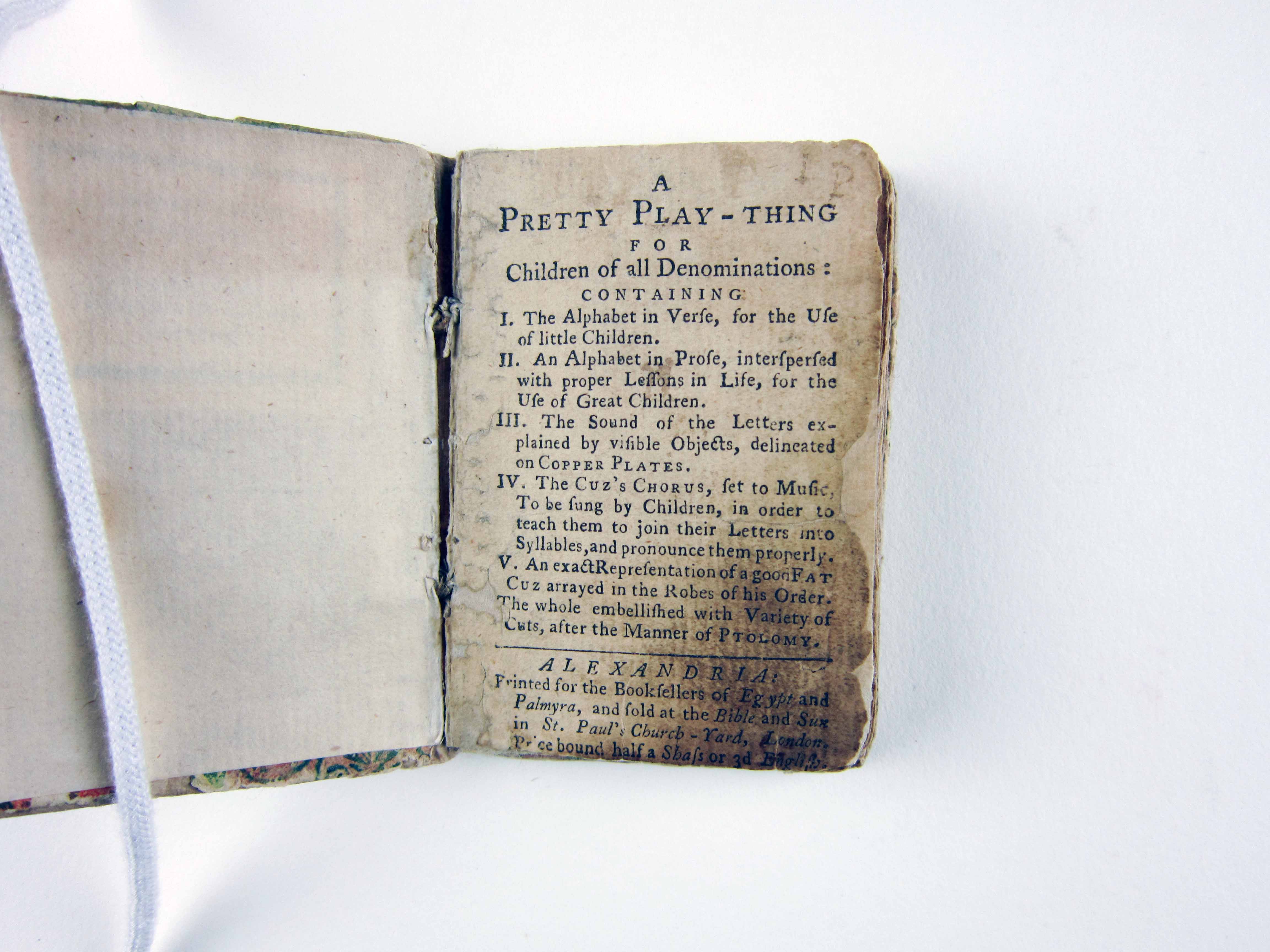
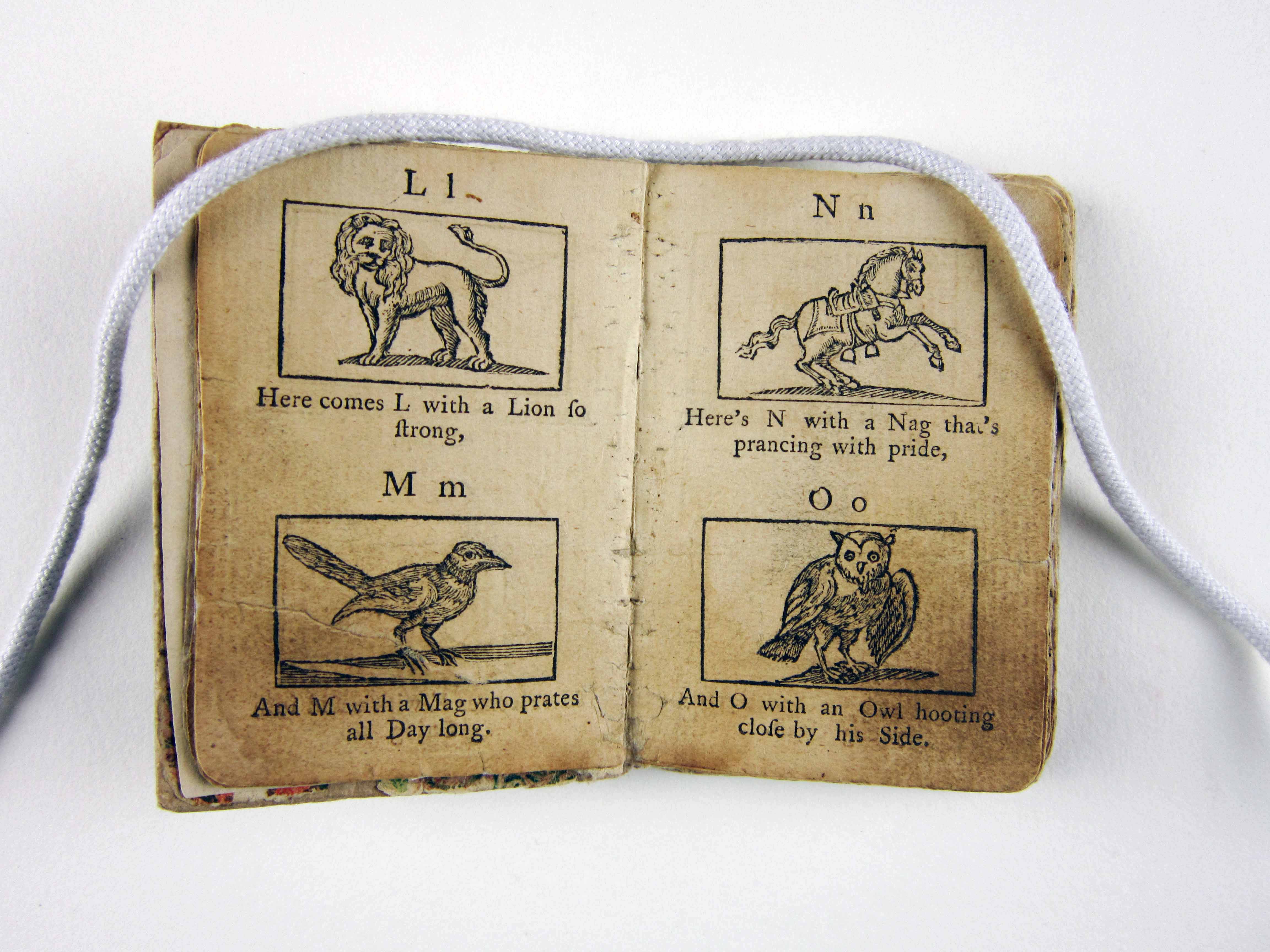
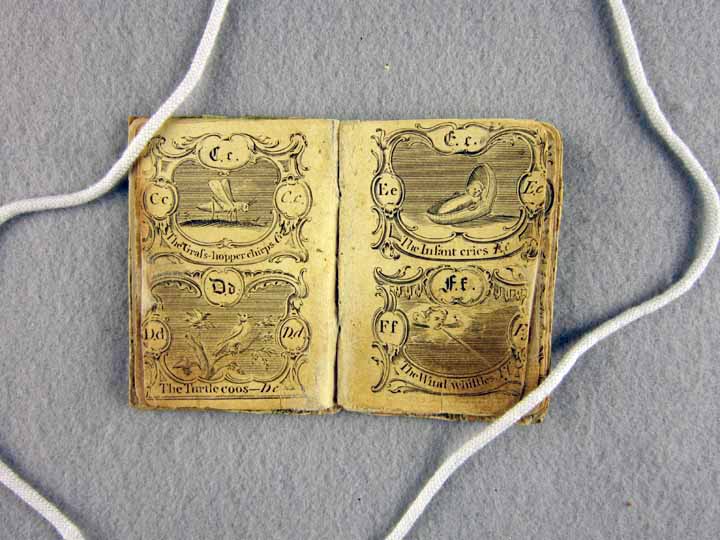
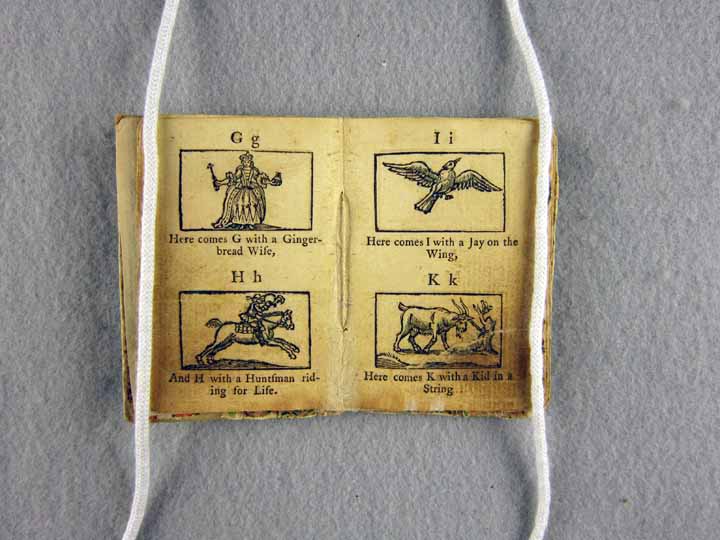
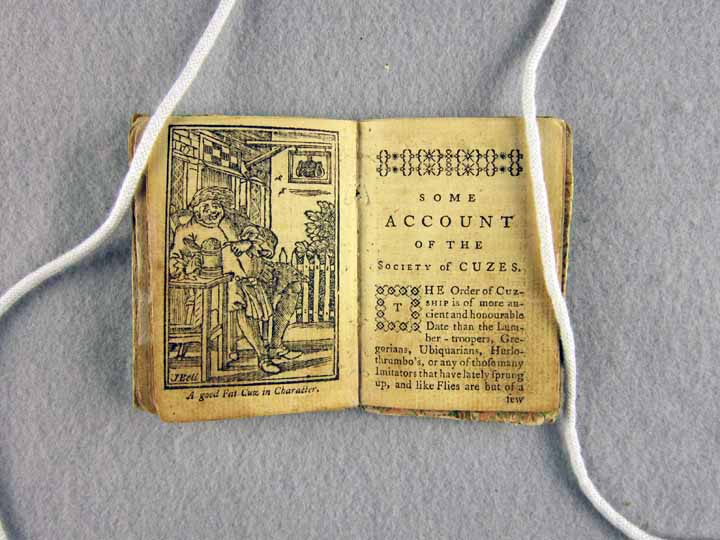
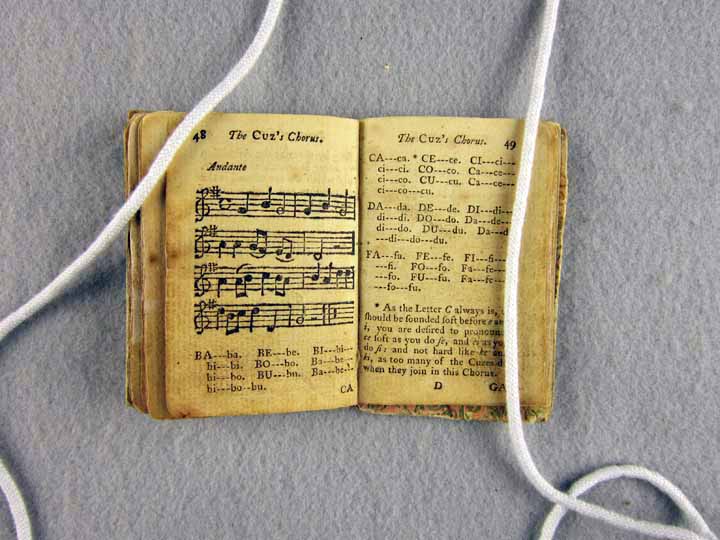
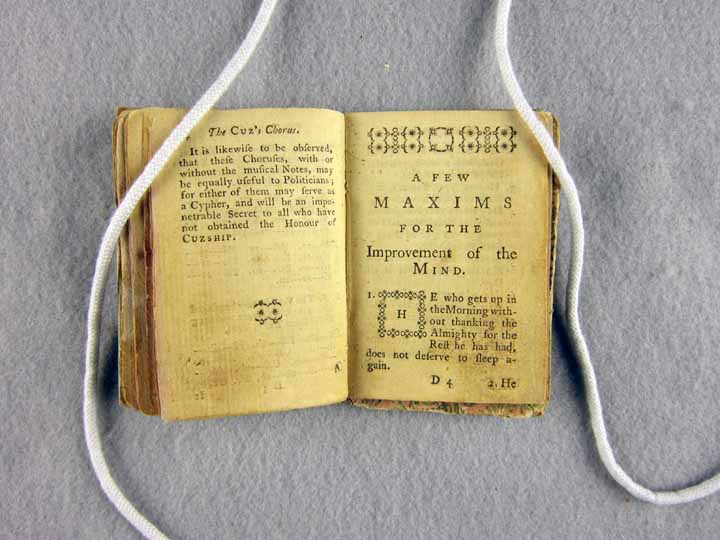
Brief description Advertisements on final 5 pages. With woodcut illustrations (1 full-page) in the text, and [12] p. of engravings. The alphabet displayed by sensible objects (12 p.) engraved in alternate facing pages of red/brown and black. Signatures: A-D_. Roscoe, S. John Newbery and his successors, J309(2)
Contents: (from t.p.) I. The alphabet in verse, for the use of little children -- II. An alphabet in prose, interspersed with proper lessons in life, for the use of great children -- III. The sound of the letters explained by visible objects, delineated on copper plates -- IV. The Cuz's chorus, set to music, to be sung by children, in order to teach them to join their letters into syllables, and pronounce them properly -- V. An exact representation of a good fat Cuz arrayed in the robes of his order.
Imperfect copy: p. [17]-18, inner margin repaired, with slight loss of text; margins frayed on engraved pages. Original Dutch floral boards. Ex libris d'Alte Aldridge Welch.
Full description A Pretty Play-Thing, printed in Alexandria, Egypt for sale in London stores is broken up into 5 sections: (1) "The Alphabet in Verse," for the use of little children; (2) "An Alphabet in prose", with lessons in life, (3) the sounds of letters explained by visible objects, (4) a choral arrangement of letters to teach the sounds of particular letters, and (5) "Maxims for the improvement of the mind."
The general content of the book is secular in nature, but the final section, related to "Maxims of the Mind," is dominated by overt religious overtones. Organized as typical primers were at this time, A Pretty Play-Thing is meant for a variety of audiences and a broad range of ages, getting progressively more difficult towards the book's end.
That the book is "for all denominations" is particularly interesting, considering children's primers in the mid-18th century were generally representations of one religious ideology, signaling a sea-change in the content of books of this nature. The alphabet is contextualized not only by images, but also sonically (in music-sheet-type arrangement), and through personification ("Then came great D with little d. Mr. D says, your Son is a Dunce...").
The alphabet is playful and interactive, yet seriousness remains, as the final line attests: "Death is a Doctor that cures all Disorders."
Literacy Children were first taught basic literacy (alphabet and basic syllabic structures), then simple spelling and catechisms using books such as A Pretty Play-Thing. Literacy was one avenue by which religious ideas were impressed upon the malleable minds of eager learners; word and alphabet were made tangible in literary tools such as hornbooks, primers, and more advanced texts such as Psalms and the complete Bible.
However, "literacy" as a term is complex, open to various interpretations over time, and has generally been a concept difficult to measure in terms of how it has changed over time. A Pretty Play-Thing, with its relatively minimal religious content, is a good representation of how children's books began to mesh both secular and religious ideas into the alphabetization rubric. The interior culture of this book is one that balances both natural images and religious maxims.
A Pretty Play-Thing illustrates a society that valued the literacy of verbal and reading skills, infused with a healthy dose of moral teaching (represented in the final "Maxims" of the book). The oral recitation skill of the alphabet is emphasized, as is shown in the "Cuz's" songs, which make songs of each letter in the alphabet, enticing a verbal game of sorts, with the characters. Significantly omitted from this text is the value of writing as a literary tool, which is an entirely different skill-set and often taught separately in 18th century British schools.
Childhood Religious values were paramount in children's books of this period, and the world was imbued with an overarching religious significance (and fear) that harkened back to texts such as Fox's Book of Martyrs. The crisscross row's symbol, a small icon of a cross which preceded the ABCs on hornbooks in the 17th century, still latently makes its presence known in A Pretty Play-Thing, albeit it to a lesser extent.
A great deal of literary content in this period spoke of the fragility of human life in dark, discomforting terms, as well as the human's susceptibility to vice which is illustrated in the book's final section, with mention of such macabre subjects as disease, death, and drunkenness.
This particular book exemplifies a shift from this religio-centric worldview, to one where play and the objective world are utilized in the instruction of the alphabet. Intellectual reason is held vital, and its facility is to aid the child to rational and social accomplishment.
"Play" and games became more common with this new shift in ideology (as is seen in the choral version of the letter sounds), as did naturalistic imagery, which draws upon on the more scientific rationality of John Locke's epistemology. After the basic alphabetic instruction, this book emphasizes good citizenry, for a child should not be "lazy," "meddling," or "gamble;" should love learning, and respect thy neighbors "hedges."
A Pretty Play-Thing is an instructional booklet on how to be an effective, compliant member of the community at a time when "childhood" begins emerging as a cherished state of human development.
Iconography A Pretty Play-thing, with phrases like "C is for Moo-Cow," clearly wants to render the alphabet real and useful. The book opens with our iconic apple for "A" followed by a "Book," which strongly resembles images of the bible that would have opened so many other books of this era, illuminated as if a sacred manuscript. But why isn't this specifically called the bible in this context? The images in this text are dominated by icons of a secular nature: an owl, an eagle, a grasshopper, lion, an infant, and the wind. These images are not overtly religious, and not one alludes to bible figures or narrative--a relative rarity in this time to not have at least one!
The image of the "Book" representing "B" may well have been used as a "bible" in other publications by this London printer. Religious ideas ran parallel with secular beliefs throughout history, but especially at this time, and printers often re-used images to different ends. Despite an overwhelmingly religious society, this text exemplifies the gradual shift in learning towards what will ultimately become the Romantic ideas that coalesced in the late 18th and early 19th centuries.
This isn't to say that the text within A Pretty Play-Thing doesn't contain overt religious content, for the "Maxims for the Improvement of the Mind" near the book's end recommend thanking the "Almighty" for the "Morning sun". Despite this mention of God, the sun (representing secularized nature) is emphasized in the imagistic representations of this book instead of God (religious iconography), signaling a shift in ideas and a change of societal values.
Production John Newbery, the publisher of this particular item agreed fervently with John Locke, who believed that education need not stem from the principles of discipline, but from delight and entertainment, and that books played an important social role in conveying this idea. With Newbery's publishing savvy, strategic partnerships with writers, artists and binders, children's books became, not only a formidable arm of the publishing endeavor in its own right, but most importantly a profitable endeavor.
"Play-Things" such as this small pocket-book, were published in a great deal of editions, with variously similar titles. Newbery tried his hand at periodicals catered toward the children's market--one of which was called The Lilliputian Magazine, which ultimately failed as a serial.
A Pretty Play Thing was no small investment, according to the United Kingdom's National Archives, this 3-pennies purchase would cost the equivalent of $1.50 if adjusted to the 2005 rates. Purchasing power for that $1.50 would be far different, however, as 3 pennies was a significant portion of the average 1760's Londoner spending income; 1 penny in 1760 bought approximately one pound of meat (the quality of which may or may not have been suspect), so books such as A Pretty Play-Thing were not accessible to, say, the laborer portion of the population where providing food was difficult enough in-and-of-itself. One can see, then, the sizeable investment of capital on both the printer and purchaser's end that must be made--and the difficulty in making such a business lucrative.
With the spread of Dame schools in this century (schools somewhat akin to ad hoc home schooling groups, led by wives and housewomen), the publishing industry, and Newbery in particular, printed more costly books (upwards of 6 pennies) to broaden their reach into the market. A Pretty Play-Thing stands as a prime example of what was considered an "affordable" text in 1760, intended for a broad and diverse audience.
Creator S. John Newbery
Publisher S. John Newbery
Date 1759
UCLA Call Number CBC PE1119.A1 P74 1759
Repository UCLA Charles E. Young Research Library, Dept. of Special Collections
Dimensions 84 mm x 58 mm
Technologies of production Copper engraving, woodcut (process)
Additional Information Printed for the booksellers of Egypt and Palmyra, and sold at the Bible and Sun in St. Paul's Church-Yard, London [i.e. London]
Caption